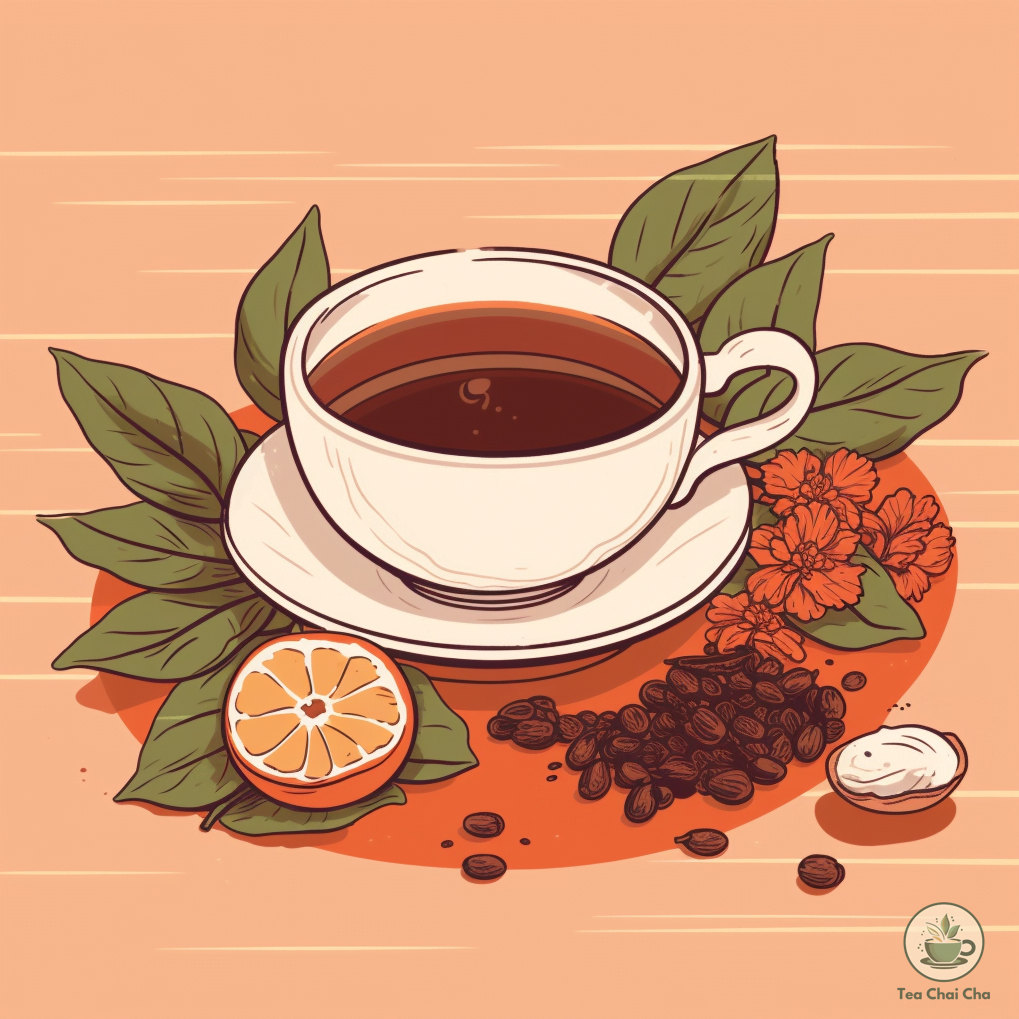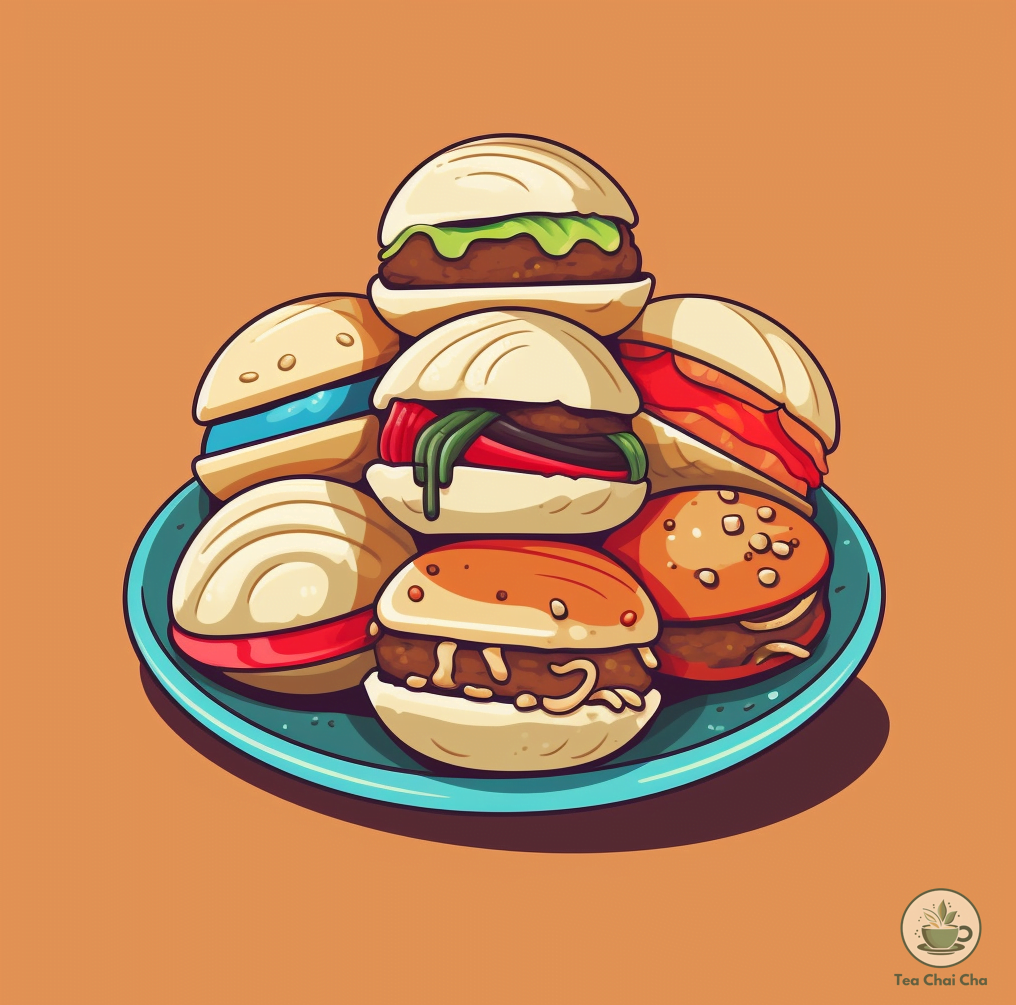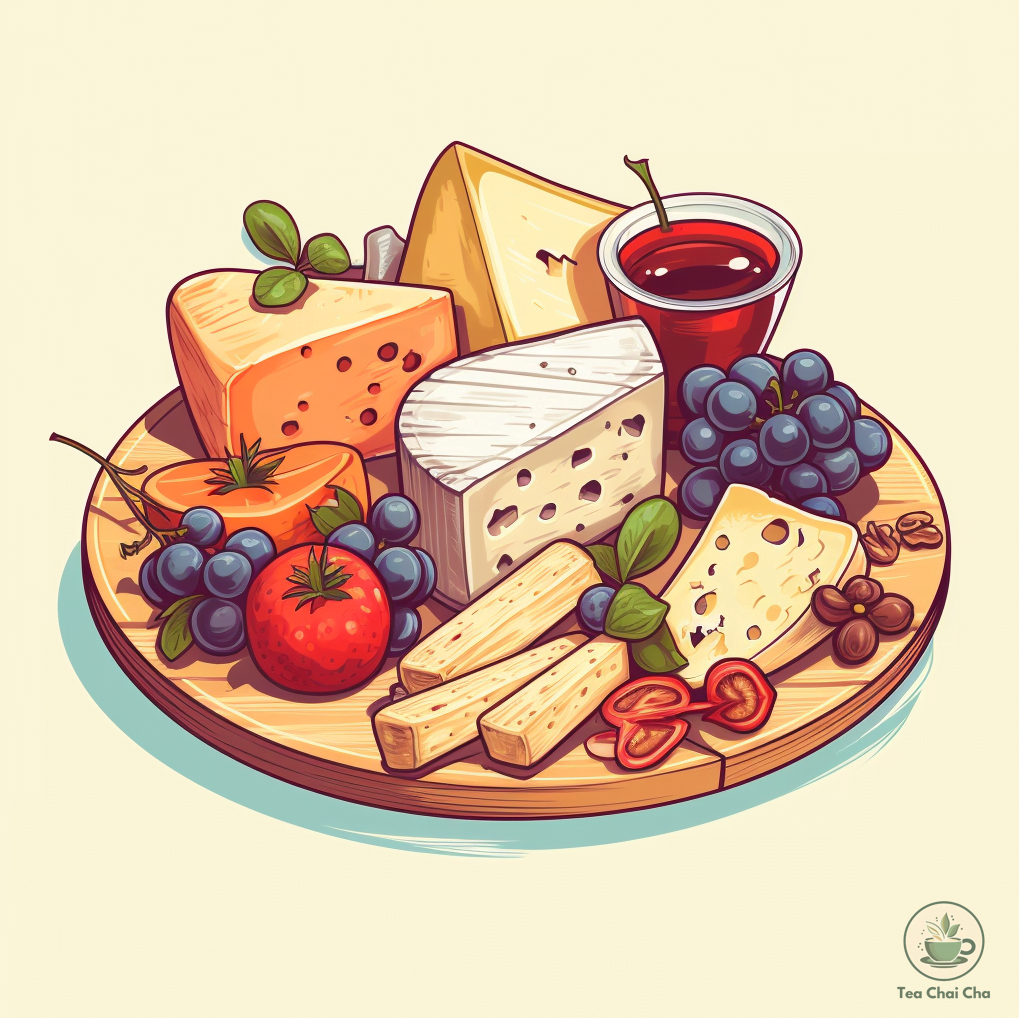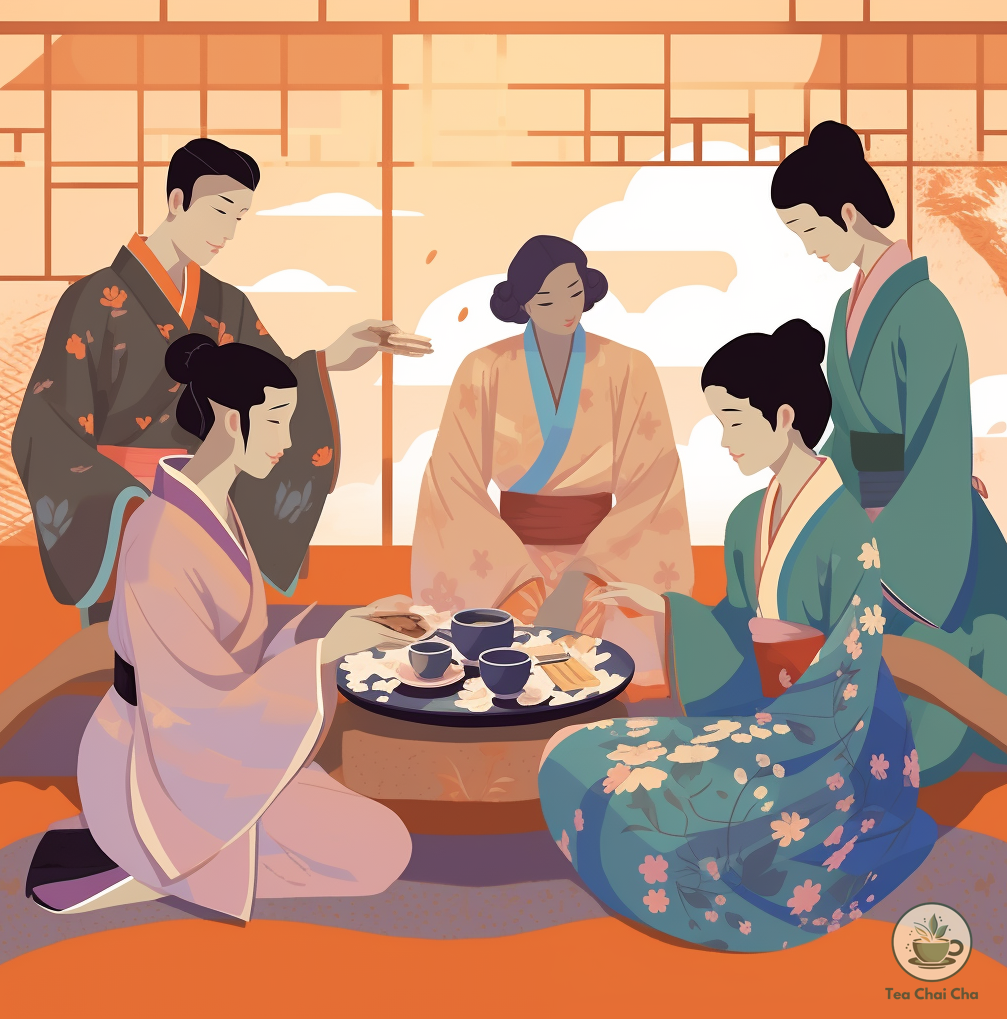Are you tired of ordinary teas that lack the charm and prestige you deserve?
Allow me to introduce you to Da Hong Pao, the crown jewel of Chinese teas.
This exquisite long-leaf oolong, with its sweet aroma and robust, yet never bitter taste, has earned its place as the world’s most exclusive tea.
The secret lies in its rarity, guarded by a select few original bushes.
But fear not, for I’ll be your guide in preparing and savoring this extraordinary brew with ease!

What Is Da Hong Pao Tea? (a.k.a Big Red Robe Tea)
Da Hong Pao, the “Big Red Robe” tea, isn’t your ordinary brew.
It’s the crown jewel of Chinese oolong teas, coming straight from the stunning Wuyi Mountains in China’s Fujian province.
Picture it as the lovechild of black and green teas, a perfect harmony of flavors.
Now, the name “Da Hong Pao” might make you wonder.
But it’s just a fitting title for a tea that’s famous across China.
They even call it one of the “The Four Great Bushes Tea“, and “Chinese Famous Teas,” and trust me, it lives up to the hype.
What makes it stand out?
Well, it’s all about those long, slender leaves.
They pack a sweet aroma punch that’s downright irresistible.
And when you take a sip, you’ll enjoy the woodsy goodness with fruity muscatel hints – no bitterness in sight.
Da Hong Pao is a bit of a celebrity.
There are only a handful of ancient tea bushes that make the real deal.
They’re the VIPs of the tea world, carefully guarded and cherished.
But even if you’re not sipping from those exclusive bushes, the tea (available in various stores online) crafted from their clippings maintains that unbeatable flavor.
Da Hong Pao Oolong Tea History
Da Hong Pao is the most pricey tea sold globally with a story as unique as its flavor.
This tea didn’t start in neat rows; it grew wild on the rugged cliffs of Wuyi Mountain in China’s Fujian Province.
Nature had its way, and that’s what makes this brew so special.
Wuyi Mountain, the tea’s birthplace, is no ordinary spot.
It’s blessed with distinct weather patterns, where temperatures swing dramatically between day and night, and daylight hours are short.
Plus, clear mountain springs nourish the tea bushes, infusing them with something truly magical.
But why the name “Big Red Robe?”
Legend has it that in the Ming Dynasty, the emperor’s mother fell seriously ill.
Tea from four specific bushes on Wuyi rock was her remedy, a miraculous cure.
In gratitude, the emperor sent vibrant red robes to drape those four sacred bushes.
Today, six of the original bushes still stand, a living testament to this tea’s enduring legacy.
While they no longer produce tea, their purebred descendants keep the tradition alive.
Types of Da Hong Pao
Let’s explore the three captivating types of Da Hong Pao tea that you can find in the market.
1. Mother Tree Da Hong Pao
These are the original bushes, and they are incredibly rare.
Only six of these ancient bushes remain, with three dating back to the Song Dynasty.
So rare that at an auction, just 20 grams of this tea fetched a staggering 208,000 RMB (over $30,000 USD).
Since 2007, it’s been forbidden to pluck tea from these bushes to ensure their longevity, making this tea the most expensive on Earth.
Sadly, it’s a taste we might never experience, but don’t worry, there are alternatives.
2. Purebred Da Hong Pao
In the 1980s, researchers began cloning the mother trees, and they succeeded remarkably.
These cloned bushes are virtually identical to the originals, even after many generations.
In 1988, tea experts confirmed that tea from these “clone” bushes matched the mother trees in taste.
This led to a surge in Big Red Robe production, with over 40,000 acres now dedicated to purebred bushes.
These bushes resemble shrubs with thick branches and oval, shiny green leaves.
3. Commodity Da Hong Pao
To meet the soaring demand, the Tea Research Institute of Wuyi Mountain got creative.
They blended purebred Red Robe with other Wuyi rock teas like Rou Gui and Shui Xian, resulting in “commodity Da Hong Pao.”
This blend has gained popularity for its color and flavor. Good blends offer a mellow taste with a rich fragrance.
But they don’t strongly resemble any single tea in the blend – a crucial characteristic.
However, a challenge lies in the market.
Poor-quality teas from Wuyi Mountain often get labeled as Da Hong Pao, making it tricky to discern between genuine commodity Big Red Robe and lesser-quality teas from the same area.

Why Is Da Hong Pao So Expensive?
Da Hong Pao, often touted as the world’s most expensive tea, carries a price tag that can leave you wide-eyed.
Just one gram of this remarkable tea can set you back more than $1,400.
And if you’re eyeing a full kilogram, be ready to part with a jaw-dropping $1.2 million.
In a tea world where leaves reign supreme, Da Hong Pao reigns as the undisputed heavyweight champion of pricey brews.
In 2002, a mere 20 grams of this liquid gold found a buyer willing to pay a staggering $28,000.
So, why does it come with such an astronomical price?
-> Centuries of Luxury
For centuries, Da Hong Pao has been synonymous with luxury.
As I mentioned, dark oolong tea traces its roots to the misty mountains of Fujian Province, China.
Here, six mythical “mother trees” stand sentinel, believed to bear the original leaves that birthed this exceptional tea.
These trees are so cherished that they have armed guardians to protect them from harm.
The crème de la crème of leaves plucked from these sacred trees is reserved for the most esteemed guests.
In fact, the legend goes that even Chinese Premier Zhou Enlai presented Da Hong Pao to none other than Richard Nixon during the U.S. president’s historic visit to China in 1972.
-> A Rare Gem with Limitless Demand
Da Hong Pao’s exclusivity is further amplified by its rarity.
The source of this tea, the mother trees, is a finite resource.
There are only six of these ancient trees left, with three dating back to the Song Dynasty.
Such scarcity escalates the demand, contributing to its astronomical prices.
-> From Treasures to the Grocery Shelf
What adds to the mystique of Da Hong Pao is the sharp contrast between its astronomical prices and everyday affordability.
While one might expect such a precious commodity to remain shrouded in exclusivity, it’s surprisingly accessible at your local Chinese grocery store, often priced at as little as $4 per ounce.
This enigmatic duality between luxury and affordability is a testament to the unique world of Da Hong Pao.

How to Make Da Hong Pao Tea
Now that we’ve got our hands on this exquisite Da Hong Pao tea, it’s time to brew it to perfection.
It’s a tea worth treating with care, so here’s how we’ll do it, step by step.
Ingredients and Tools: What You’ll Need
All you need is some Da Hong Pao tea leaves, around 5 grams (about a heaping teaspoon) for an 8-ounce cup.
And, of course, fresh water.
Make sure it’s high-quality, filtered, or spring water.
You’ll also want a teapot or a gaiwan (a Chinese lidded bowl), a timer, and a cup to enjoy your brew.
Step 1: Boil the Water
Start by heating your water to about 195°F (90°C).
It should be hot but not boiling like a volcano.
Give it a moment to cool down slightly once it reaches the right temperature.
Step 2: Warm the Teapot
Pour a small amount of hot water into your teapot or gaiwan.
Swirl it around to warm up the vessel, and then pour it out.
This little trick helps keep your tea at the perfect temperature during brewing.
Step 3: Add the Tea Leaves
Now, place your Da Hong Pao tea leaves into the warmed teapot.
Remember, a little goes a long way, so 3-5 grams should do for a standard cup.
Step 4: Rinse the Leaves
Pour hot water over the tea leaves, covering them completely.
Let the tea steep for just a few seconds, then quickly pour out this first infusion.
This rinse awakens the leaves and clears away any impurities.
Step 5: First Infusion – 30 Seconds
Next, pour hot water over the tea leaves again, but this time let them steep for around 30 seconds.
You’ll see the leaves unfurling and the aroma getting stronger.
Step 6: Second Infusion – 45 Seconds
For the second round, pour hot water over the leaves again, but this time, let them steep for about 45 seconds.
This longer infusion extracts even more flavor.
Step 7: Keep Brewing
You can keep brewing Da Hong Pao for more rounds, extending the steeping time with each infusion.
This rare oolong tea can yield 9 infusion without changing its taste.
From then onward, each cup can reveal new flavors.
Step 8: Sip and Savor
Finally, pour your tea into a cup and enjoy the rich, woodsy character and fruity muscatel tones of Da Hong Pao.
Take your time to savor every sip of this exceptional brew.
Scroll to the bottom to have complete recipe with ingredients and instructions.
Da Hong Pao Tea Hot or Cold – How Chinese Enjoy It?
Da Hong Pao, the tea with a touch of luxury, is often enjoyed hot, and that’s how it’s been cherished for generations.
-> Hot Da Hong Pao Is A Classic Tradition
Traditionally, Da Hong Pao has been sipped piping hot, and it’s quite the tradition.
Chinese tea lovers have a deep respect for this tea, often serving it to esteemed guests and on special occasions.
Its rich and smooth flavor, with hints of woodiness and fruity muscatel notes, truly shines when brewed hot.
-> A Rare and Precious Offering
Even today, Da Hong Pao remains a tea of distinction, often set aside for elite guests.
Because it’s so rare and costly, it’s a precious gesture that speaks of the highest respect and honor.
While anyone can enjoy it, the tradition of serving Da Hong Pao to important VIPs and dignitaries continues in China.
-> Exploring Iced Da Hong Pao
But, you know, tea lovers are a curious bunch.
Some have started trying Da Hong Pao cold.
While it’s been a hot tea for centuries, there’s no strict rule against having it cold.
People have found that even when chilled, the tea’s complex flavors still shine through.
How to Make Iced Da Hong Pao Tea
For a single serving of iced Da Hong Pao tea, you’ll need:
- About 5 grams (or a heaping teaspoon) of Da Hong Pao tea leaves.
- Fresh, pure water.
- A glass or a jar with a lid.
- Time – yes, time is an essential ingredient for cold brewing.
Preparing the Tea: A Single Serving
To make one serving of iced Da Hong Pao tea, follow these simple steps:
Step 1: Measure the Tea Leaves
Start by measuring about 5 grams of Da Hong Pao tea leaves.
This is roughly equivalent to a heaping teaspoon.
Adjust the amount based on your preference for strength.
Step 2: Add Cold Water
Place the measured tea leaves in a glass or a jar. Now, pour in cold, fresh water.
You’ll want about 8 ounces (240 milliliters) of water for this single serving.
Step 3: Seal and Chill
Once the water and tea leaves are together, seal the glass or jar with a lid.
Now, pop it in the refrigerator.
Let the the tea slowly infuse with the cold water.
Step 4: Patiently Wait
Cold brewing takes time, but it’s worth it.
Allow the tea to steep in the refrigerator for at least 4 hours, or overnight if you prefer a stronger brew.
Step 5: Strain and Serve
When the wait is over, it’s time to savor your creation.
Strain the tea into a fresh glass, and add ice cubes if you like.
Your iced Da Hong Pao tea is ready to enjoy.
9 Factors That Affect the Flavor of Da Hong Pao Tea
When it comes to Da Hong Pao tea, flavor is everything.
Let’s learn about the factors that influence the taste of this extraordinary brew.
1. Terroir
The geographic origin of Da Hong Pao leaves a profound mark on its flavor.
This tea hails from the Wuyi Mountains in China’s Fujian Province.
The unique soil, climate, and altitude of this region impart distinct woodsy, mineral, and floral notes to the tea.
2. The Mother Tree Legacy
The leaves from the original mother trees are considered the gold standard.
Tea plucked from these ancient trees carries the purest essence of Da Hong Pao, boasting a richer and more nuanced flavor profile.
3. Leaf Quality
The quality of the tea leaves matters immensely.
Higher-grade leaves consist of whole, unbroken leaves, while lower grades may include broken leaves and stems.
The purer the leaves, the more refined and intense the flavor.
4. Processing Techniques
The method of processing Da Hong Pao leaves significantly influences their flavor.
Roasting, rolling, and oxidizing are carefully orchestrated to achieve the desired balance of sweetness, aroma, and body.
5. Roasting Levels
The degree of roasting imparts specific flavors to Da Hong Pao.
Light roasting accentuates floral and fruity notes, while deeper roasting enhances the woodsy and nutty aspects.
Roasters’ expertise is vital in achieving the perfect roast.
6. Water Quality
Water quality plays a pivotal role in extracting Da Hong Pao’s flavors.
Pure, fresh water allows the tea to express its full potential.
Water with impurities or strong flavors can mask or alter the tea’s natural taste.
7. Brewing Time and Temperature
The timing and temperature of brewing are crucial.
Steeping Da Hong Pao for too long or at too high a temperature can lead to bitterness.
Conversely, under-brewing may result in a milder flavor.
Precision in brewing brings out the tea’s optimal taste.
8. Tea Leaf Aging
Like fine wine, Da Hong Pao can benefit from aging.
Properly stored tea develops deeper, more complex flavors over time.
However, aging requires careful preservation in a cool, dry place.
9. Cup and Teapot Material
The vessel in which you brew and serve Da Hong Pao can influence its flavor.
Porcelain, clay, or glass can bring out different nuances in the tea.

Tasty Da Hong Pao Tea Food Pairing
Now, let’s get to the good stuff – food pairings!
Da Hong Pao tea has a unique profile that pairs wonderfully with various dishes.
1. Classic Chinese Pairings
In China, enjoying Da Hong Pao tea is a cherished tradition, especially when paired with dim sum.
The rich, roasted flavors of Da Hong Pao complement the savory and sometimes slightly greasy dim sum dishes perfectly.
Think dumplings, spring rolls, and savory buns – they’re all fantastic companions to this exquisite tea.
2. Royal Delights
During ancient times, Chinese emperors were known to savor Da Hong Pao tea with exquisite Imperial cuisine.
These dishes, often delicate and beautifully presented, include braised abalone, shark’s fin soup, and bird’s nest soup.
The tea’s robust and earthy notes harmonize with the complex flavors of these dishes, creating an unforgettable dining experience fit for royalty.
3. Sweet Harmony
Don’t be surprised if you find yourself reaching for a sweet treat to enjoy alongside your Da Hong Pao.
The tea’s roasted and mineral-rich profile complements desserts like almond cookies, egg tarts, and even chocolate truffles surprisingly well.
The contrast between the tea’s warmth and the sweetness of these treats creates a delightful balance on your palate.

4. Cheese and More
If you’re feeling adventurous, try pairing Da Hong Pao with a cheese platter.
The tea’s complexity pairs beautifully with the creaminess of brie or the sharpness of cheddar.
You can also explore Da Hong Pao’s affinity for roasted meats like pork or duck, as well as spicy dishes like Sichuan hotpot.
The tea’s robust character stands up to these bold flavors, making for a memorable culinary journey.
5. My Personal Tip
One of my personal favorite pairings is Da Hong Pao tea with roasted nuts.
The toasty notes of the tea enhance the nutty flavors, creating a harmonious combination.
Almonds, cashews, and pistachios are all excellent choices.
It’s a simple yet delightful snack that you can enjoy anytime.

When to Drink Da Hong Pao Tea
Da Hong Pao tea is a fascinating part of Chinese culture, and it’s all about timing when it comes to savoring this delightful brew.
-> Ancient Chinese Traditions
Centuries ago, the Chinese emperors were onto something special.
They relished Da Hong Pao tea during their imperial ceremonies.
This tea was a symbol of prestige and luxury, reserved for the most important occasions.
So, if you want to embrace a touch of tradition, consider enjoying Da Hong Pao during special celebrations and gatherings.
-> Morning
One of my favorite times to enjoy Da Hong Pao tea is in the morning.
Its robust flavor and mild caffeine kick make it a fantastic choice to kickstart your day.
Instead of reaching for that usual cup of coffee, try sipping on some Da Hong Pao.
It’ll give you a gentle energy boost without the jitters.
-> Afternoon
Around mid-afternoon, when you need a little pick-me-up, brew a cup of this tea.
Its warm, earthy tones and calming qualities can help you power through the rest of the day with ease.
But don’t drink it in the late afternoon, evening, or at night due to the caffeine content of oolong teas.
-> Special Occasions
Much like the emperors of old, you can reserve Da Hong Pao tea for special occasions in your life.
Whether it’s a birthday, anniversary, or any moment you want to make memorable, this tea can elevate the experience and create lasting memories.
Da Hong Pao Tea Recipe
Recipe by Tania FaysalCourse: DrinksCuisine: Chinese2
servings5
minutes5
minutes1
kcal10
minutesPrepare the Royal Da Hong Pao Tea for 2!
Ingredients
4 grams of Da Hong Pao Tea
500 milliliters of fresh spring water
Directions
- Gather the Ingredients: Purchase premium Da Hong Pao tea leaves and fresh spring water for an authentic tea experience.
- Heat the Water: Bring the fresh spring water to a temperature of 200°F (93°C). This temperature ensures the perfect steeping conditions for your Da Hong Pao tea.
- Steep the Tea: Add the Da Hong Pao tea leaves to the teapot and pour the hot water over them. Let the tea steep for about 5 minutes.
- Serve with Love: Carefully pour the steeped Da Hong Pao tea into tea cups. Savor the rich, robust flavors of this exquisite Oolong tea with your loved one.
Recipe Video
Notes
- Cold Brew: You can cold brew Da Hong Pao tea like any other oolong tea for a more mellow taste and caffeine content.
- Multiple Infusions: Da Hong Pao is famous for maintaining its taste for up to 9 brews. So, you can infuse it many times and still get your penny's worth.
Frequently Asked Questions (FAQs)
What does Da Hong Pao tea taste like?
Da Hong Pao tea has a bold and complex flavor profile. It offers a mix of roasted, mineral, and floral notes with a hint of sweetness and a long-lasting aftertaste.
Does Da Hong Pao tea have caffeine?
Yes, Da Hong Pao tea contains up to 50 mg caffeine per 8 ounce cup. It’s considered a partially oxidized oolong tea, which generally has moderate caffeine content, providing a gentle energy boost.
Is Da Hong Pao a real tea?
Yes, Da Hong Pao is a real and highly prized tea. It’s a famous Chinese oolong tea known for its exceptional quality and history.
Is Da Hong Pao black tea?
No, Da Hong Pao is not a black tea. It is an oolong tea, which falls between green and black tea in terms of oxidation level. Oolong teas are partially oxidized, whereas black teas are fully oxidized.
How many calories are in Da Hong Pao tea?
Da Hong Pao tea is very low in calories. A typical serving (8 ounces or 240 ml) contains virtually no calories, making it a great choice for those watching their calorie intake.
